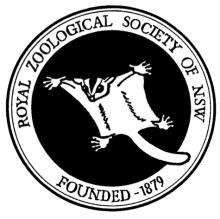Resource information
A consequence of the European colonization of Australia has been a significant ioss of biodiversity: one in four mammal species is either extinct or threatened. In contrast, only one species of bird has been lost from the Australian continent and there is less concern for the survival of the Australian avifauna than for mammals. This is despite the fact that nearly one in five bird species is listed as threatened or of âspecial concernâ. Moreover, a review of the status of Australian birds at local, regional, state and continental scales shows that the impact of Europeans on the avifauna is much greater than acknowledged. Over most of southern Australia entire avifaunas are threatened with extinction. When allowance is made for habitat loss and degradation, 30 to 90% of bird species across the continent have declined in abundance. The extent of this decline is that the survival of many bird species in the 21st Century is threatened. While a majority of birds in southern Australia has declined in abundance and/or distribution, others have increased. Parallel changes are proceeding in northern Australia. In terms of evaluating impact on the avifauna, an increase in numbers and a change in the composition of avian communities are as significant as the loss of populations and species. Both adversely affect patterns of continental biodiversity and are ecologically dysfunctional. Assuming that current trends continue, over the next century, significant components of the avifauna will be lost as populations proceed to extinction and the composition of avifaunas change at scales ranging from the local to the continental. The pattern of change in avian abundances, and the failure to anticipate or acknowledge the major losses of birds on the Australian continent, shows that conservation emphasis needs to shift from a species by species approach to the conservation of communities and entire avifaunas. Taken together. the scale of the changes in the distribution and abundance of Australian birds is an affirmation that present and projected patterns of human use of the Australian continent are not sustainable. Much needs to be done to reverse the decline of the terrestrial avifauna and achieve ecological sustainability in land use. The most urgent actions are to end the clearing of native vegetation, reduce gazing pressure, remove inappropriate fire regimes, control feral and native animals whose-abundance threatens native species and restore functional ecosyslems, with an emphasis on native vegetation, to a minimum of 30% of the landscape. These need to be accompanied by an aggressive programme to improve water quality in fresh water habitats and restore environmental eater flows, and the creation of a comprehensive. adequate and representative reserve system across the continent irrespective of land tenure. In the absence of such action. I predict that Australia will lose half of its terrestrial bird species in the next century.



